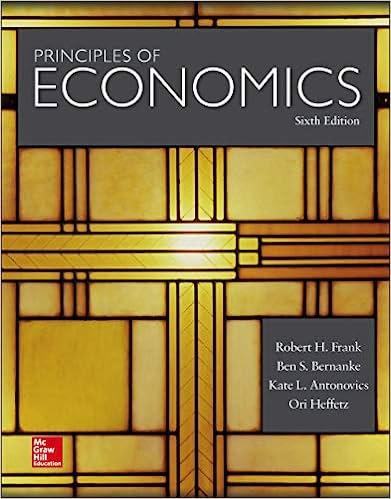.DEMAND ESTIMATION Early in 1993. the Southeastern Transportation Authority (STA), a public agency responsible for serving the commuter rail transportation needs of a large Eastern city, was faced with rising operating deficits on its system. Also, because of a fiscal aus- terity program at both the federal and state levels, the hope of receiving additional subsidy support was slim. The board of directors of STA asked the system manager to explore alternatives , to alleviate the financial plight of the sysrem. The first suggestion made by the man aget was to institute a major cutback in service. This cutback would result in no serv- ice after ?:00 ML, no service on weekends, and a reduced schedule of service during the midday period Menday through Friday. The board of STA indicated that this alternative was not likely to be politically acceptable and could only be considered ' as a last resort. The board suggested that because it had been over five years since the last basic fare increase, a fare increase from the current level of $1 to a new level of $1.50'should be considered. Accordingly, the board ordered the manager to conduct a study of the likely impact of this proposed fare hike. The system manager has collected data on important variables thought to have a - significant impact on the demand for rides on S'I'A. These data have been collected . over the past 24 years and include the following variables: 1. Price per ride (in centslThis variable is designated P in Table 1. Price is expected I to have a negative impact on the demand for rides on the system. 2. Population in the metropolitan area serviced by STAIt is expected that this vau-' able has a positive impact on the demand for rides on the system. This variable- is designated '1' in Table 1. 3. DiSposable per capita incointhThis variable was initially thought tojltavc a P05' itive impact on the demand for titles on STA. This variable is designated'._l m ['31th l 4. Parking rate per hour in the downtown area (in cents)~This variableiis CXPCCECd to have a positive impacr on demand for rides on the STA. It is designated H _ Table 1. Weekly Riders (Y) Price Data on Transit Ridership Year (X1,000) . (P) per Ride (Cents) Population (T) (X 1,000) Income (1) Parking Rate (H) (Cents) 1966 1,200 15 1967 1,800 1,190 2,900 15 1,790 1968 1,195 3,100 50 15 1,780 1969 1,110 3,200 60 25 1970 1,778 1,105 3,250 60 25 1971 1,750 1,115 3,275 25 60 1,740 1972 1,130 3,290 25 70 1973 1,095 1,725 4,100 75 Table / 30 1974 1,725 1,090 4,300 75 30 1975 1,720 1,087 4,400 75 30 1976 1,705 1,080 4,600 30 80 1977 1,710 1,020 4,815 80 40 1978 1,700 5,285 1,010 80 40 1,695 1979 5,665 85 1,010 40 1980 1,695 5,800 1,005 100 40 1,690 1981 5,900 105 995 40 1,630 1982 5,915 930 75 105 1983 1,640 6,325 915 105 75 1984 1,635 6,500 20 75 110 1985 1,630 6,612 125 940 75 1986 1,620 6,883 950 130 75 1987 1,615 910 7,005 1.50 100 1988 1,605 7,234 930 1.55 100 1989 1,590 933 7,500 165 100 1,595 1990 940 7,600 175 100 1991 1,590 7,800 948 175 100 1992 1,600 8,000 190 955 100 1,610 8,100 200 The transit manager has decided to perform a multiple regression on the data to deter- mine the impact of the rate increase. Questions: 1. Using a multiple regression program available on a computer to which you have access, estimate the coefficients of the demand model for the data given in Table 1. (Attach the computer output, and write down the regression equation) 2. Calculate the price of demand using 1992 data. 3. Calculate the income elasticity demand for 1992 dataSUMMARY OUTPUT Regression Statistics Multiple R 0.98699 R Square 0.97416 Adjusted R Square 0.96946 Standard Error 0.01584 Observations 27 ANOVA df SS MS F Significance F Regression 4 0.207948032 0.05199 207.328 4.022E-17 Residual 22 0.005516445 0.00025 Total 26 0.213464478 Coefficients Standard Error |t Stat P-value Lower 95% Upper 95% Lower 95.0% Upper 95.0% Intercept 3.00356 3.237339201 0.92779 0.36359 -3.71026897 9.7173922 -3.71026897 9.7173922 Ln Price per ride -0.1364 0.021739649 -6.2722 2.6E-06 -0.18144083 -0.09127029 -0.18144083 -0.09127029 Ln population 0.64454 0.405278829 1.59035 0.12602 -0.19596181 1.48503189 -0.19596181 1.48503189 Ln income -0.1299 0.039595622 -3.2795 0.00342 -0.21196935 -0.04773676 -0.21196935 -0.04773676 Ln parking rate 0.16753 0.032219549 5.19961 3.3E-05 0.10070994 0.23434845 0.10070994 0.23434845









